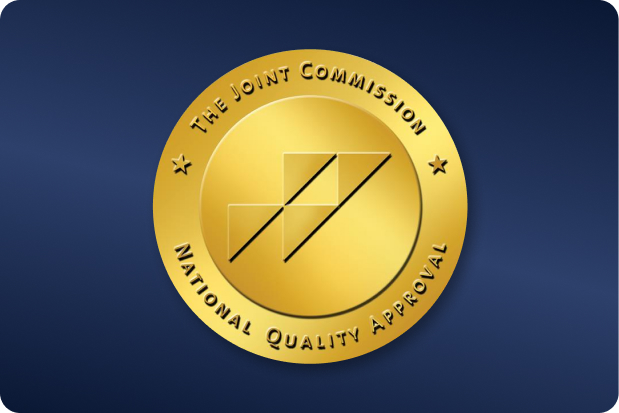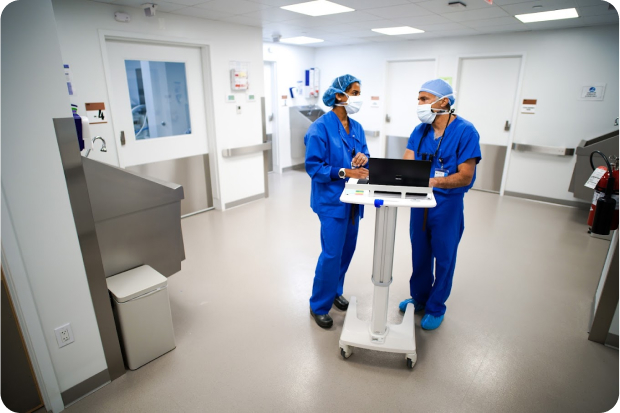 OUR LOCATIONS
Same-day Appointments Book OnlineCall to book 201.523.9590
OUR LOCATIONS
Same-day Appointments Book OnlineCall to book 201.523.9590
 OUR LOCATIONS
Same-day Appointments Book OnlineCall to book 201.523.9590
OUR LOCATIONS
Same-day Appointments Book OnlineCall to book 201.523.9590

The spine is one of the most essential parts of the human body, responsible for giving it structure, supporting the nervous system, and overall carrying most of the body’s weight. That’s why any condition that affects the spinal cord and spinal canal can be very debilitating for the patient. One of these conditions is spinal stenosis, which causes acute and chronic pain, besides fatigue.
But why do conditions like spinal stenosis cause fatigue? Most times, the effort needed to manage this condition is enough to tire you. Other causes can also include your mental state, the medications you take or accompanying neurological symptoms. Because of the widespread effects of the condition, this fatigue can compound as it progresses.
Fatigue isn’t an issue with most conditions, but for cases like spinal stenosis, it can become really debilitating. Because fatigue can creep into all aspects of a person’s life, managing it is one of the key ways of improving the overall quality of life.
Fatigue associated with spinal stenosis usually arise from the following:
Depending on the progression at the time of diagnosis, spinal stenosis can range from mild to severe. This directly correlates to how much compression the spinal canal is under, and how many nerves are pinched because of the pressure. The more your spinal stenosis has progressed, the more pain you’re going to experience.
However, it’s important to note that the pain from spinal stenosis isn’t the same from patient to patient. While it commonly manifests as acute pain in areas like the neck, arms, legs, and lower back, some patients may not even experience these symptoms at all. This varying pain – and the different complications depending on where exactly the spine is compressed – can make overall pain management difficult.
Because pain can also indicate other issues, it’s often an unaddressed by-product of spinal stenosis. However, it’s also entirely possible that the pain doesn’t stem from compressed nerves alone. Cramped muscles can be triggered by nerve damage, and cramping is a common symptom of spinal stenosis.
Pain associated with spinal stenosis can also vary between frequency and intensity. Some activities like walking or standing up can trigger acute bouts of pain, while the progression of the condition can develop into chronic pain. These are further compounded by other complications that can occur as a response to this pain.
All of this makes for a consistent state of mind and body where you’re perpetually exhausted from trying to deal with all the pain. While it doesn’t cause active injury or trauma, chronic pain can wear down at you psychologically, and drain your body’s resources as it reacts to that pain.
Combined with the strain of your body managing the other symptoms of spinal stenosis, it’s easy to see why this condition can cause chronic fatigue. Even people with the mild progression of spinal stenosis often feel chronic fatigue from just managing acute or chronic pains that come with having the condition.
The goal of medications used to treat spinal stenosis is to manage the pain and improve the patient’s quality of life. But because each person may have a different reaction to the medicine, their side effects may differ. Most of the medications used to treat spinal stenosis fall under pain relievers and NSAIDs, though they’re more used for short-term results and acute pain. Anti-inflammatory medicine in particular can only provide short term relief, and is usually not prescribed for long term use because of its effects.
More long-term medications for managing spinal stenosis include opioids, antidepressants, and anti-seizure medications. These medications are often greater in potency – and side effects– compared to NSAIDs and pain relievers, which can affect your physical and mental well-being. Because of the effects of these medications, it’s easy to fall into chronic fatigue with regular use.
Given that these medications are also non-negotiables when treating spinal stenosis (especially if it’s progressed to advanced stages), their effects can compound and turn into chronic fatigue. The stronger the medication, the stronger its side effects will be. Fatigue is a common symptom of many of these medications, and can only be managed with long-term care and advice from your doctor.
Spinal stenosis narrows the gaps between vertebrae, compressing the nerves in the spinal cord. This pressure on nerve clusters can trigger an onset of neurological symptoms that can be difficult to manage for patients long-term, especially without medical treatment.
Some of these symptoms include:
These symptoms can actively impede your daily routine, significantly lowering your quality of life and putting you and other people around you under increased strain. Working individuals or people who need full-time care can easily find themselves limited between the activities that they can do because of these symptoms.
Managing these symptoms can also drain the person’s time and energy. Medication may help, but you also risk developing fatigue from its effects, depending on its potency. Even then, the treatments used to manage these neurological symptoms may not actually address spinal stenosis itself, which means you only get short-term relief.
People with spinal stenosis go through significant amounts of acute and chronic pain, sometimes with medications that have considerable side effects, with the symptoms actively interfering with their day-to-day activities. With all these factors, fatigue is a very common effect of spinal stenosis that you’ll need to deal with.
So how do you manage the fatigue that comes with spinal stenosis? Aside from following your doctor’s advice, there are other management methods that you can look into that can significantly reduce fatigue and improve your quality of life overall:
One effect of spinal stenosis is that it can often change your posture without warning, especially if your body is trying to compensate for the pinched nerves and reacting to the pain of the condition. This can cause your posture to change in small yet significant ways.
An aspect that’s often overlooked with posture issues is your sleeping position. Because your body is locked into this position for a significant amount of time, it can have a drastic effect on your spinal canal. This is even more essential if you’re recovering from surgery, as your spine will change positions while you recover.
For people with spinal stenosis, maintaining a proper sleeping position is critical because it can help manage the symptoms of their condition, and may even prevent it from progressing further. The other benefits of good sleep positions can also combat fatigue as it helps you have a better night’s sleep, which translates to more rest and energy in the morning.
There are three common sleeping postures that people gravitate towards, and you can usually improve the quality of your sleep by choosing one that’s best suited for your spine. In order, these positions are:
One way to ensure that you improve the quality of your sleep is by getting better pillows and possibly another mattress to support you while you sleep. While the specifics may differ from patient to patient, aiming for a sleeping environment that can offer the best amount of support while also being comfortable enough to sleep in is crucial to maintaining a healthy posture for the spine. This also prevents additional strain on the muscles.
Doctors may give recommendations on other tools to improve the quality of sleep and prevent spinal stenosis from progressing any further. You may get more personalized recommendations from a sleep specialist, but you must check in with your primary care doctor first.
Another way of managing the fatigue from spinal stenosis is by changing your physical routine. While a lot of this can be managed with consistent physical therapy, small lifestyle changes and exercise can help with chronic fatigue.
However, it’s important to keep in mind the activities for people to deal with chronic fatigue should not be confused with the usual exercise that most people go through. This is because most of these exercises aren’t designed for the specific needs of spinal stenosis patients, and neither are they effective in addressing fatigue. It can also be ineffective with cases that involve surgery.
What your doctor will most likely recommend is a personalized course of Graded Exercise Therapy (or GET). These exercises progress from low-intensity activities to moderately paced ones with the goal of conditioning the body to establish a threshold where it can conduct physical activity efficiently and without overexerting your muscles.
These exercises can be performed with physical therapy, but they’re most often performed by patients at home. However, it’s still crucial that they be accompanied by someone who can keep track of their progress or help them when things go wrong, especially if they’re much older. None of these exercises are supposed to be physically demanding, but it’s best to have someone nearby for safety precautions.
It should be noted that you should not attempt any changes to your physical routine without the advice of your doctor. Because spinal stenosis can affect different areas of the spine, they will most likely ask you to undergo a series of tests before approving any sort of physical activity. These tests can include magnetic resonance imaging (MRI) scans, physical examinations.
While these recommendations can help most spinal stenosis patients deal with fatigue, specific cases may need more options for treatment if fatigue has become a constant presence in their life. If you’re experiencing chronic fatigue that doesn’t go away with treatment, always consult your doctor.
Fatigue is symptomatic of other conditions aside from spinal stenosis and can be an invaluable early sign of more serious complications happening because of the condition. Since the effects of spinal stenosis are widespread all over the body, persistent fatigue that doesn’t improve with time can be a sign that more aggressive primary care is required.
Overall, it’s a good idea to involve your doctor when trying to deal with the fatigue from spinal stenosis. They can provide a personalized recommendation on how to manage it better and help introduce you to avenues you can use to improve your resilience overall.
Spinal stenosis is a manageable condition, but you may experience chronic fatigue because of its overall effects. Most times, adjustments to your lifestyle can be enough to treat fatigue. However, a certain amount of tiredness is to be expected, especially if you’re an older patient.
With the Spine And Rehab Group, you can get a fast diagnosis and effective treatment of your back pain, and manage the underlying condition to prevent it from getting worse. We pride ourselves on offering innovative and quality treatments combined with excellent customer service. As one of New York’s leading providers on spinal care, you can visit any of our clinics in the city today for a consultation about us and what we can do for you.
Read more: What To Avoid Before An Epidural Steroid Injection



